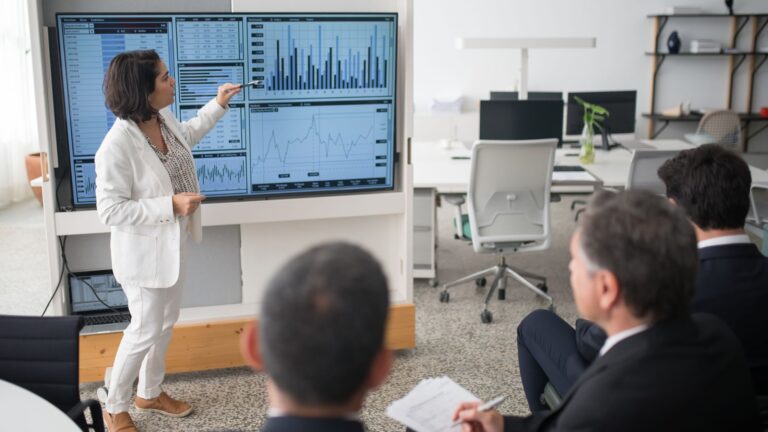What is Proof of Work in Blockchain? A Beginner-Friendly Guide
Alright, let’s get real—“proof of work” sounds like something your boss invented to make you stay late at the office, right? But nah, it’s just a fancy way of saying there’s a system behind how blockchains stay safe from bad guys. Don’t sweat it if you’re new.
I’m not here to throw tech jargon at your face. Seriously, if you’re a student zoning out in class, a crypto bro flexing your coins, or some random person who just clicked out of curiosity—this is for you. We’re breaking down the basics, plain and simple, no PhD required.
Table of Contents
1. What is Proof of Work?
2. How Does Proof of Work Function?
3. Why Is Proof of Work Important?
4. Real-Life Example: Bitcoin
5. What is Mining in Blockchain?
6. Drawbacks of Proof of Work
7. Alternatives to Proof of Work
8. Is Proof of Work Still Relevant?
9. Final Thoughts
10. FAQs
11. References
1. What is Proof of Work?
Alright, so proof of work is basically the OG way blockchains make sure everyone’s on the same page. Imagine a giant group chat, but with money at stake—nobody wants anyone fudging the receipts. Bitcoin kicked off this whole thing, by the way.
Here’s the gist: proof of work is like a nerdy marathon where computers are all scrambling to crack some obnoxiously tough math problem. Whoever nails it first gets to slap their update onto the blockchain (like calling dibs, but for digital money) and snag a reward. It’s kinda brutal, burns a ton of electricity, but hey—it keeps the system honest.
2. How Does Proof of Work Function?
Alright, picture this: you’re zipping some Bitcoin over to your buddy. Where does it go? Not straight to them—nah, first it lands in this digital waiting room, just chilling with a bunch of other transactions. Then come the miners (think: computer nerds with beefy machines). These folks basically race each other, crunching away at some crazy-hard math puzzle that’s tied to all that transaction stuff.
Whoever cracks it first? They get bragging rights and their answer gets double-checked by everyone else—no trust falls here. If the answer’s good, boom, that chunk of info (the block) locks onto the chain and your friend finally gets their Bitcoin. Proof of work, they call it. Honestly, it’s kinda slow and chews up a ton of power, but that’s the point: makes it a real pain in the ass to mess with the system. Cheaters? Good luck, pal.
3. Why Is Proof of Work Important?
Alright, picture this: you’re zipping some Bitcoin over to your buddy. Where does it go? Not straight to them—nah, first it lands in this digital waiting room, just chilling with a bunch of other transactions. Then come the miners (think: computer nerds with beefy machines). These folks basically race each other, crunching away at some crazy-hard math puzzle that’s tied to all that transaction stuff.
Whoever cracks it first? They get bragging rights and their answer gets double-checked by everyone else—no trust falls here. If the answer’s good, boom, that chunk of info (the block) locks onto the chain and your friend finally gets their Bitcoin. Proof of work, they call it. Honestly, it’s kinda slow and chews up a ton of power, but that’s the point: makes it a real pain in the ass to mess with the system. Cheaters? Good luck, pal.

4. Real-Life Example: Bitcoin
Alright, here’s the real deal with Bitcoin: it basically runs on this thing called proof of work. Honestly, it’s like a digital rat race every ten minutes. Picture this—you send 0.01 BTC to your buddy (or whoever), and that transaction gets tossed into a big ol’ pile with a bunch of others.
Now, miners? They’re like caffeine-fueled gamers, smashing away at a puzzle, hoping to be the first to crack it. Whoever figures it out fastest gets the shiny prize and slaps their block onto the blockchain. It’s been rolling like this, smooth as butter (okay, sometimes with a few hiccups), since way back in 2009. Wild, right?
5. What is Mining in Blockchain?
Alright, so mining’s basically just a bunch of computers sweating it out, cracking math problems all day. Seriously, these rigs suck up electricity like it’s going out of style. But hey, solve enough puzzles, and you get paid in shiny coins—Bitcoin and the like. Not bad, right? Honestly, without these miners grinding away, the whole proof-of-work thing would just fizzle. No miners, no blockchain magic. Simple as that.
6. Drawbacks of Proof of Work
Okay, let’s be real—this setup’s got a few headaches:
First off, it guzzles electricity like a frat boy at an open bar. Your power bill’s gonna scream.
Next, you can’t just roll in with your laptop—nah, you need those tricked-out, wallet-crushing mining rigs.
And the speed? Don’t hold your breath. You’ll be waiting forever just to see your transaction crawl through.
No wonder people are out there hunting for something better.
7. Alternatives to Proof of Work
So, here’s the deal—there are some newer ways people are trying out:
- Proof of Stake—
Basically, instead of burning electricity mining, you just need to own a chunk of the coins.
- Proof of Authority—
Yeah, that’s where a handful of trusted folks give the thumbs up to transactions.
Still, honestly? Proof of Work is like the old reliable pickup truck of the blockchain world. It burns a lot of gas, sure, but when it comes to public networks, nothing else has stood the test of time quite like it.
8. Is Proof of Work Still Relevant?
Oh, absolutely—proof of work is still the big boss for heavyweights like Bitcoin and Litecoin. People keep hyping up the new kids on the block, but honestly, proof of work’s got the street cred. It’s battle-tested. Ain’t getting dethroned overnight, though yeah, some of the fresher blockchains are eyeing slicker, eco-friendlier ways to do things. Can’t really blame ‘em—nobody wants to torch the planet just for a meme coin, right?

9. Final Thoughts
proof of work basically glues the whole thing together. No one’s pulling a fast one with Bitcoin while it’s around. Sure, it sucks up a ton of energy (I mean, the electric bill would make your eyes water), but people trust it. So, until something way better comes along, it’s sticking around. If you’re hungry for more bite-sized tech wisdom, swing by ZenThoughts.in—seriously, it’s like the cheat code for blockchain basics.
10. Frequently Asked Questions (FAQs)
Q1: Is proof of work the same for all blockchains?
Not exactly. While the basic idea is the same, the difficulty and rewards vary.
Q2: Can I mine Bitcoin from my PC?
Not anymore. Mining now needs powerful machines called ASICs.
Q3: Why is it called “proof” of work?
Because the miner must show they did real work by solving a problem.
Q4: Does proof of work affect the environment?
Yes, it uses a lot of power, which raises concerns about carbon emissions.
Q5: Is Ethereum still using proof of work?
No. Ethereum switched to proof of stake in 2022 to save energy.
11. References
Disclaimer
This article is for educational purposes only. It does not offer financial or investment advice. Always do your own research or consult experts before acting on any blockchain-related topic.


